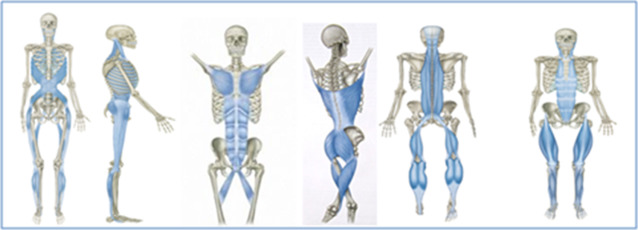Why Plank When You Can Do This!!
2018-10-24

Jessica Bento, Physical Therapist (Creator DVRT Restoration, DVRT Shoulder Course, DVRT Pelvic Control Course)
There are certain challenges that I think physical therapists and fitness professionals can really relate upon. One of those big ones is the fact that we know certain exercises are good for people, but they may have limitations in performing them. A great example is who doesn’t know that a plank is good for core stability? We all do right? However, for a lot of reasons people can’t do planks such as….
-Shoulder issues
-De-conditioned and can’t hold their body weight. This includes challenges in being quite overweight, or older clients, but it can also simply be people that have not worked out or worked out in a long time!
-Weak core! I know this sounds silly as the whole point of a plank is to build core strength right? But doing a plank correctly can be extremely challenging and require a baseline of good core strength.
So, what do we do to help people with the idea of having success but still accomplishing the goals of great exercises like the plank? Well, that is what really attracted me to become more involved with DVRT. No, it wasn’t my husband, trust me (hey, how many of YOU have tried to work with your spouse, ugh!). It was the idea that we weren’t married to exercises, but rather movement concepts.
What do we want to achieve with the plank? We want to BRACE! What is that? It is about getting “tight” through the trunk to stabilize the core. Okay, what is that? As Josh likes to use the idea of “you’re on the beach and someone attractive walks by, what does everyone do? They get TIGHT!” I don’t want to give him too much credit, but that does help people understand the real role of the plank.
If we understand the point, then we can look at a lot of ways to accomplish that idea that doesn’t necessarily have people have to start with the plank. The question is how do we get people to learn HOW to create the proper tension to achieve the plank? A lot of that has to go back to something you’ve head us talk a lot about, hands and feet!
Over half of your bones are in these small areas of your body and they are the entry point of force to your body, so they are pretty important. The question becomes, how do we get people to learn how to use them so we can progress not just the plank, but core training overall?
Start at the Beginning
Starting people on their backs is as easy as we can make learning some of these concepts. People think the “magic” of DVRT is in the exercises and they are partly right. However, the REAL magic lies in the little cues we give people that allow them to learn how to use their bodies better. Above is a great example, listen to the little cues that Josh gives on our Dead Bug series that teaches people HOW to brace their core and create proper tension.
You can see in all our DVRT core based drills we use these tension concepts and trying to connect the chains of the body which is what REALLY gives us results! As we have written a lot about the big difference with DVRT is that we are trying to connect the chains of the body that create movement in real life. What DVRT Master, Danny Jackowicz, breaks down is how the concepts we teach in DVRT carry over to the plank and so many other of our core drills and even better movement oriented exercises.

If we look at how we are connected in real life movement, then we realize that our exercises should reflect these components and exercises like the plank are just a starting point on how to connect these chains. As DVRT Master, Elizabeth Andrews, shows how we take the concepts of the plank and them challenge them with the purpose of trying to keep these connections.
Ultimately, we need to stop thinking of exercises first. We need to think about the lessons of movement that the exercise teaches us. Movement educators, teaching people how to connect to their bodies can be the most powerful thing we ever help people really learn. Here are some ideas of how we build upon these ideas of not only the plank, but the side plank as well.
Don’t keep “doing” exercises, start learning how our bodies work and how we can create workouts that are designed to teach our bodies to function better. If you wonder why you aren’t achieving your fitness goals this is a big reason why! To be part of the solution, we are offering 25% off our DVRT workout programs HERE and online education HERE with coupon code “save25”
© 2025 Ultimate Sandbag Training. Site by Jennifer Web Design.







